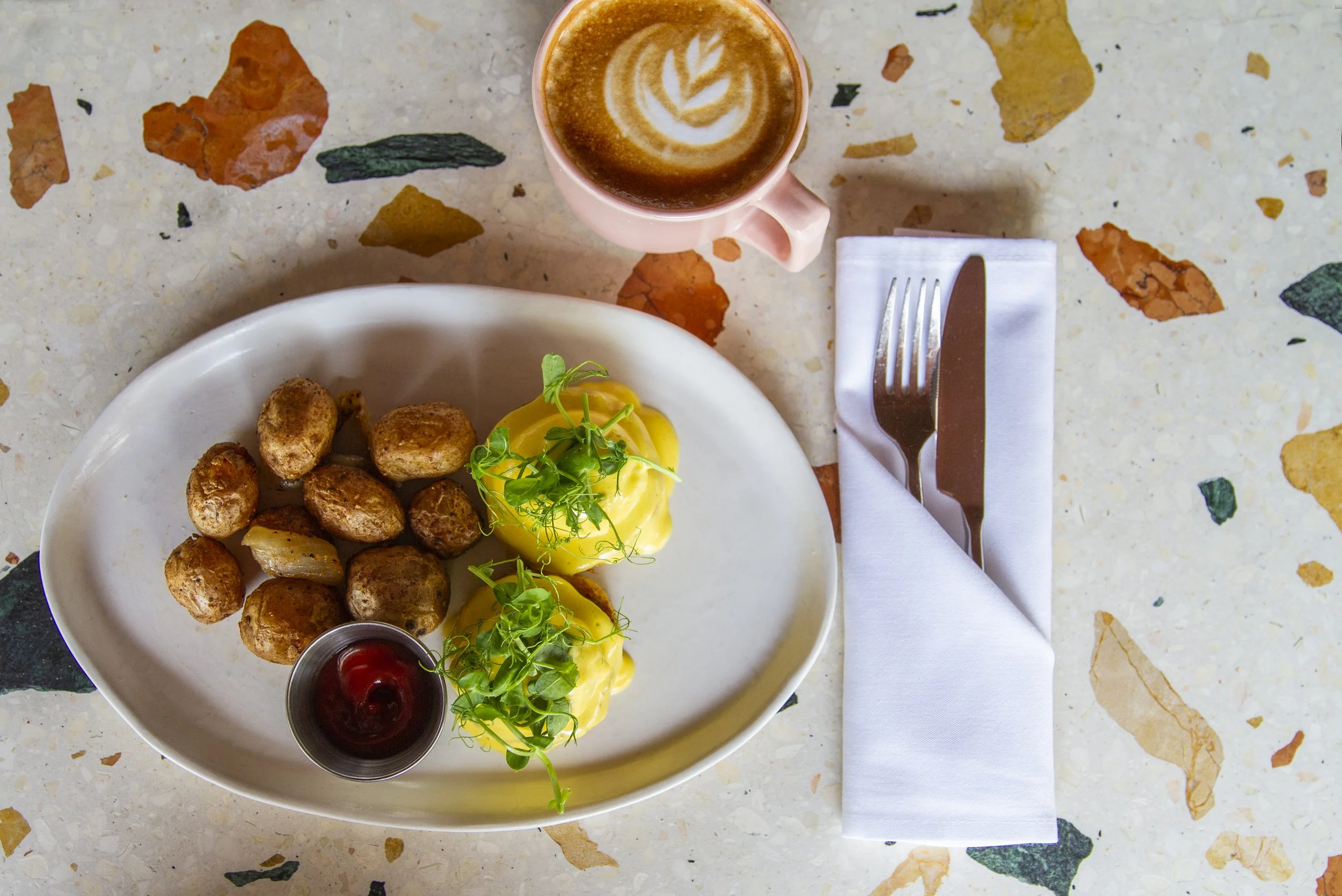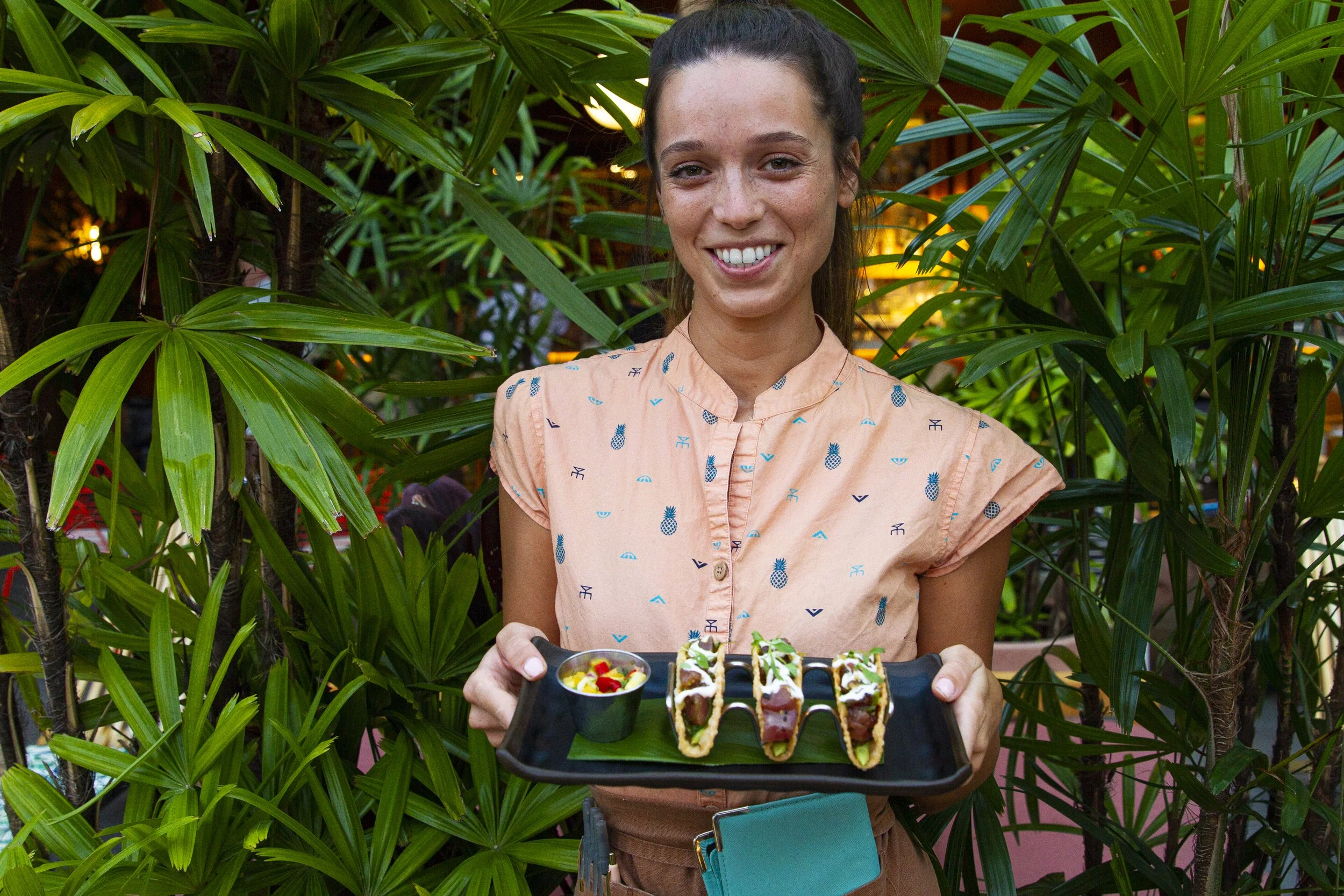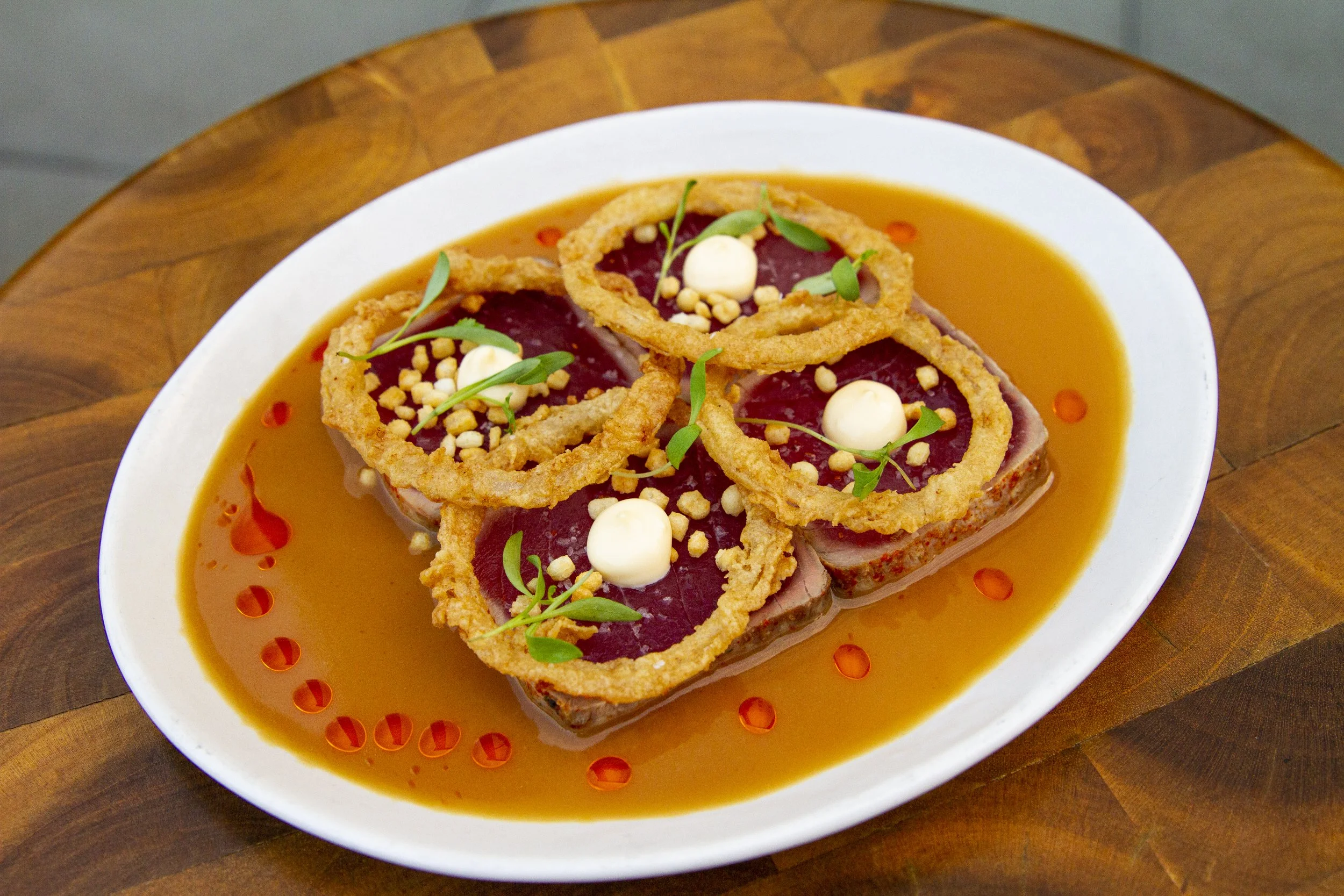What’s Local?
Hawaiian Food Independence
Words and Photos by Justin “Scrappers” Morrison
I’M SITTING AT A RESTAURANT TABLE ON AN ISLAND in the middle of the Pacific Ocean asking the server “what’s local.” It’s a loaded question and I feel confrontational asking it. They answer, “It’s all local.” Mahalo, but I’m calling bullshit.
Hawai’i imports about 85% of it’s “local” food. Spam from Minnesota, pineapples from Costa Rica, rice from Iran, and although you can fish without a license in Hawai’i, only a quarter of the seafood is caught locally. Heck, even most lei flowers are from Thailand. So let’s get real about what’s local.
Defining “local” is complex because of the different waves of people who’ve washed up on shore with food in their pockets. The first Hawaiians brought Ulu (breadfruit), Kalo (poi), Coconuts, and other foods that we call “native”. Generations of pineapple and sugar plantation workers from Japan, China, The Philippines, Portugal, and even descendants of African slaves from the States brought all the spice. The army brought canned meats and missionaries brought macaroni salad. Mix this all together and you get some of the weirdest local food on the planet.
Local food in Hawai’i is tasty for sure and fresh isn’t hard to find with its year-long growing season. Guava blooms and fruits twice a year here. Hardy papaya seeds sprout from backyard compost piles and grow into full-on fruit producing trees. Coconut and Ulu trees drop their bowling ball sized fruit onto the occasional parked car. Although you may not find it appetizing, chicken runs wild on every roadside. Limu (edible seaweed) and opihi (limpets) are kept fresh on sea-splashed shoreline rocks. Fresh local food is physically within reach, but psychologically out of reach.
Imported plastic-wrapped snacks, Spam, and artificially flavored drinks are what’s mostly consumed. Even the local beer of choice, “Green Bottle”, is Heineken from Zoeterwoude, Netherlands. Why would you want this stuff, when what’s local is so much better? I’m not a food psychologist, but I have a theory.
When I was a child the first big choices I learned to make on my own were at the corner store. With a pocket full of coins I defined myself with my purchases. Buying a yellow bag of Funyuns meant I was a guy who valued fun. Buying a Pepsi meant I wasn’t a square like those Coke drinkers. I came to see food purchases as flying a flag to express my uniqueness. Buying my identity through brands limited my scope on what food is actually good for. It limited my scope on who I could be also. Fresh food doesn’t have identity like a sparkly candy bar does. Fresh food requires more independent choices. Reaching beyond a chip bag for locally grown fruit is a tiny rebellion. Viva el Mango!
When I worked at a newspaper on Maui, I would walk around the neighborhoods on my lunch breaks to refresh my eyes and grab a snack from the corner store. One day I came across a bush growing over the sidewalk fruiting what looked like tiny red bell peppers. I picked some and brought them back to the office to decorate my desk. Keo, one of the locals I worked with, told me these were Surinam cherries. I ate one and it took my mouth on a flavor rollercoaster ride. The ride went from familiar cherry sweetness heights, plummeting down to hellish cayenne spiciness, then flipping upside down with the thought “Did she trick me into eating poison berries?”, and then back up to a normal level of sweetness. It became my new favorite snack, and foraging the neighborhood for fresh food refreshed my whole life.
Those tropical cherries changed the way I saw myself from shopper to forager. Soon I was salvaging mangos out of yard debris piles, I brought home custard-leaking ‘ulu found growing in parking lots, and would fill my pockets with lilikoi and starfruit that grew like weeds in alleyway short-cuts. Foraged cherimoya, also called ice cream fruit, filled the freezer because when you cut them in half you get two bowls of frozen custard-yum-cream with seeds that even look like chocolate chips. Eating fresh food made me feel fresh. I came to understand the natural world around me and my place in it.
This forager outlook stuck with me at the supermarket. I’d go to Whole Foods (the rich hippy grocery store) for beef locally grown on the Big Island, Down to Earth (the stinky hippy grocery store) for ripe apple bananas, and Sack-N-Save (the hippy-less grocery store) for locally grown bok choy. The farmer’s markets were full of touristy stuff, but if you looked between the tiki-carvers and Indoneasan-made jewelry vendors, you found fresh turmeric root, sugar cane juice, and fresh poi. The only way to enjoy poi is when it‘s fresh. That powdered stuff is only for crappy souvenirs.
Eating local at restaurants is trickier because you can’t see the food source clearly. I sometimes indulge in the guilty pleasure of a local dish called Loco Moco from a secret spot on Maui called Tasty Crust. So local right? Wrong! It’s a scoop of rice sweating bullets, under a hamburger patty gasping for a breath, smothered by a fried factory farm egg screaming “Kill me!”, while a glob of beef gravy oozes down the slopes of this sadness volcano. I love it. It’s very “local”, but not locally grown at all!
It’s easy to find local food at fancier restaurants, but you have to squint hard at the menu to see beyond the bullshit. The Hideout in Waikiki is a true oasis from the idiotic nonsence of international tourism. This unpretentious, yet high-end, restaurant rises above the hub-bub and offers creative local dishes like their North Shore Eggs Benedict; with mango hollandaise, Kauai-raised prawn and crab cakes, and baby potatoes; the Buckwheat Pancakes, with macadamia nut butter, and Kona coffee maple syrup; the Yogurt & Local Fruit, with bright yellow mango Greek yogurt, local granola, local fruit, and berries. What local food do you see there? Not the “local” granola. Grain isn’t grown in Hawai’i! More like locally baked. Yet, Kona coffee, macnuts, Kauai-raised prawns, and local fruit, that’s the stuff I look for and am happy to pay a little extra when I see it on the menu.
Mahina & Sun’s is another wonderful local restaurant in Waikiki that’s a hidden poolside treasure at the Surfjack Hotel. They offer a perfectly ripe papaya for when I need the simplest form of local food. When the watery farmers of Kualoa Ranch on O’ahu can offer them, Mahina & Sun’s have local oysters with chili pepper water, limu, and lime. When I’m feeling fancy I splurge on the Monchong with locally grown ‘ulu, green beans, cherry tomatoes and chervil. When I’m feeling even fancier, I wear a button-up shirt, socks in my shoes, and order the local Opah (Moonfish) with cucumber, fennel, sumac, flatbread and black olives. Hold up! Black olives don’t grow in Hawai’i? I bite my tongue and enjoy the meal anyway.
It’s hard to find local food on Hawaiian menus because it’s hard to find farmland in Hawai’i. Land is so valuable to developers that a normal organic farm could never serve the needs of get-rich-quick big spenders who own most of everything. But there is a valley on O’ahu that’s been overlooked by developers and left to the people who know how to live in natural harmony on these islands. The Wai’anae valley has the biggest population of indigeneuos people in all of Hawai’i. It’s not like a mainland Indian reservation but it faces a lot of the same challenges that come from having your land, life, and traditions beaten out of you by settlers. Oh, am I saying some rough stuff? Damn right. Imagine how much rougher it is to feel. Really, take a moment to stop reading and imagine it.
Are you back now? What sort of feelings did you imagine? I imagined being disconnected from my culture, like having my roots chopped off. I imagined hopelessness, depression, poverty, eating as cheaply as possible, fear, distrusting my neighbors, survival-mode scheming, and escaping with drugs, alcohol, and internet additions. The classic aftermath of colonization. Yet, hope is growing in Wai’anae. MA’O Organic Farms is growing fresh produce in the valley for local supermarkets like Sack-N-Save and local restaurants like Mahina & Sun’s. Beyond growing food they’re growing farmers.
MA’O works to reconnect Hawaiian youth with their ʻāina (ancestral land) and culture through sustainable organic farming. They offer a variety of work/trade internships. The work is straight-up hands-turned-to-the-dirt farming, but the trade is really where it’s at. The interns get training as farmers, college credit, healthy food, and money for living expenses. MA’O is growing a natural bridge that helps connect Hawaiian people to a sustainable future made stronger because of their ancestral connection to the ʻāina while growing food for everyone. This farm is helping to change the story indigenious Hawaiian’s tell about themselves from colonized to empowered. MA’O has shown them they have the advantage to sustainably living here because they are not just visiting. This is their home and it will be for as long as they care for it.
As a visitor I can encourage and support Hawaiian independence by seeking out locally grown food. It takes a little more effort, a little more education, and a little more rebellion against the normal flow of consumption zombie tourism. But it’s worth the effort because it’s the only way to live within nature’s bounty on an island.
We are not on this planet to consume what is sold to us by large profit-driven corporations. We are here like all the other critters of Earth; to enrich the environment. We’ve lost our way, just as Hawaiians have when they’re stripped of their culture and connection to the ʻāina. We need to pull our heads out of our plastic chip bags, reject the stupid realities of consumer culture, and fight for local food if we want to live sustainably. If we want to live like locals on our planet.











